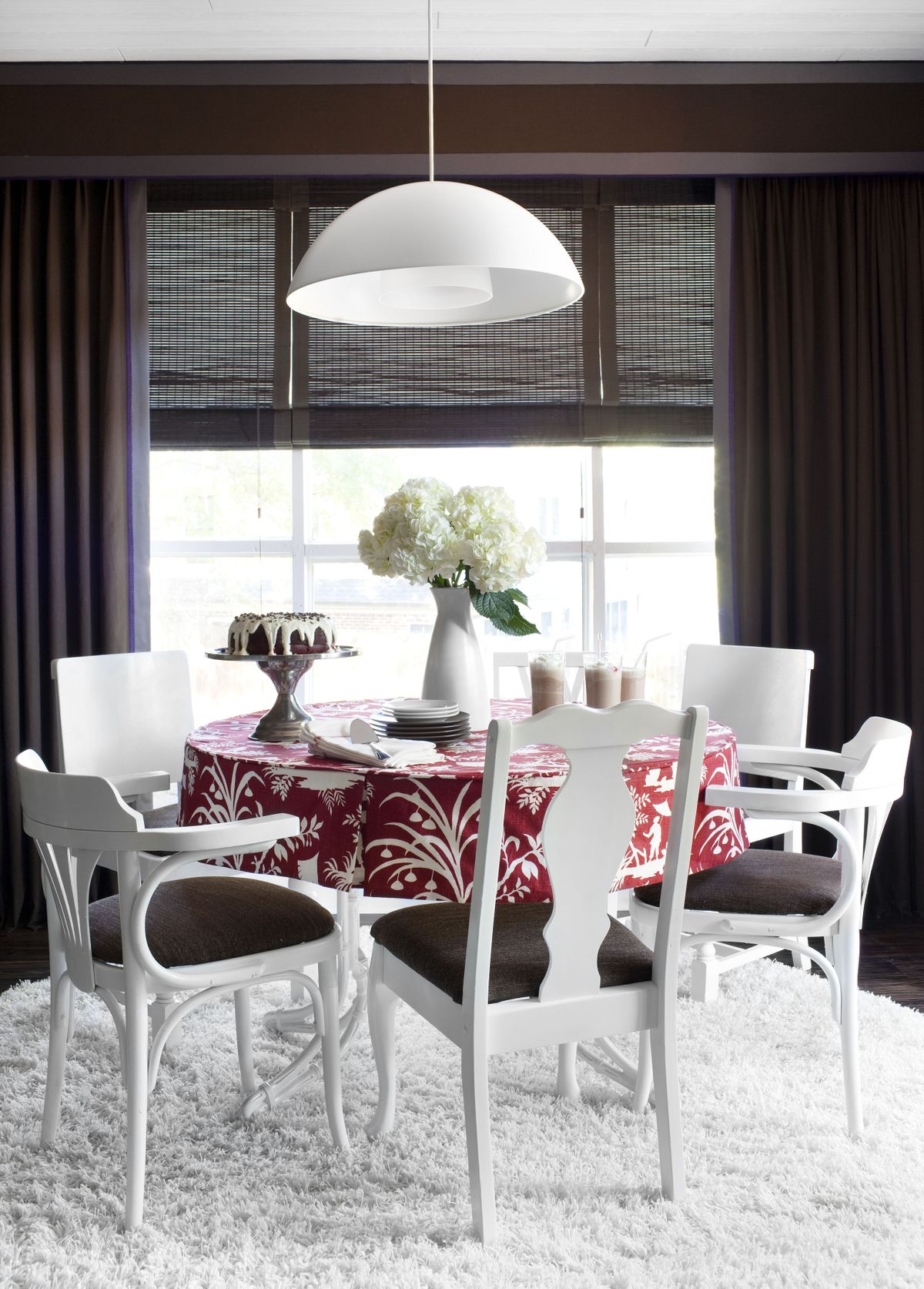Versatile dining rooms combine comfort, beauty

For generations, families ate in their kitchens and only ventured into their dining rooms on special occasions. The dining room was a place for guests, where stiff-backed chairs and fragile china kept everyone on their best behavior.
But as our lives have changed, so have our dining rooms.
Today’s dining rooms are used in more ways than ever before, says HGTV host Genevieve Gorder. They merge comfort and beauty to create a space where people want to linger.
Gorder and interior designers Brian Patrick Flynn of decordemon.com and Betsy Burnham of Burnham Design in Los Angeles share the trends they’ve spotted and offer tips to create a perfect – and perfectly useful – dining room.
Multi-tasking at the table
Many homeowners now see the dining room as a flexible space where meals are not the only priority. The dining room table often is the go-to location for working on art projects, wrapping gifts and doing homework.
So people are seeking durable tables that can withstand plenty of attention, rather than carefully polished ones that are easily scratched.
Dining room storage has also changed. The room may double as a home office, with a laptop and paperwork stashed in the sideboard during meals.
Many people have moved their formal dishes to kitchen cabinets, where expanded storage space allows the good china to be stored alongside the everyday dishes and displayed in glass-front kitchen cabinets.
Dining room storage might be filled with anything from office supplies to children’s toys. Burnham recently designed built-in cabinets for a client’s dining room that were made to hold art supplies rather than dishes.
Mixing instead of matching
The days of the perfectly matched suite of furniture – the “dining room set” – are over. In designer-decorated homes, you’re more likely to see deliberately mismatched chairs and a table that contrasts starkly with the room’s other furniture.
“Even retailers like West Elm are catching on,” Flynn says. They may offer matching chairs for the ends of the table and a mix of seating for the sides that includes benches and chairs.
Homeowners are also mixing materials and textures.
“The dining table may be some type of stone and the chairs some type of wood,” Flynn says, “and the sideboard may be made with mirror or metal or clad with a decorative finish. Everything has its own evolved, separate look.”
He likes to buy “six or eight chairs that are all different, or maybe just two or three are the same. Then I strip them myself with sandpaper, add spray primer, then spray on a glossy spray-paint” to make every chair the same color.
Flynn upholsters all the chairs in the same fabric to bring a cohesive look to this eclectic mix of furniture styles.
Using mismatched china is also big, Gorder says, including “mixing a few pieces of Grandma’s china” with sleek, modern dishware.
Table linens can be a broad mix of casual cottons and formal linens layered together.
The dining room can be a perfect place to let your creativity run wild, Burnham says. If you don’t spend extended hours there during a given week, then bolder colors and patterns work well.
Dining without fear
We’ve moved away from “the severity of antiques we’re afraid to touch,” Gorder says, and toward “the rustic elegance” of the big farmhouse tables you might find in Provence or Italy.
“It feels like, ‘Yes, this is a very special piece. But I can drop a plate on it and not cry and not get in trouble,’ ” she says.
As comfort has become a priority, pretty but unforgiving chairs are definitely out. Burnham advises testing out new dining chairs before you buy them, since you want your table to be a place where people will enjoy lingering for hours.
Flynn likes to create new pieces that give a nod to the formality of the past.
“For a custom-looking sideboard,” he says, “find an old dining room table at a flea market” that has some ornate woodwork.
“Saw it in half the long way, directly down the middle, fix it to a wall and paint it a bold color.”
Not handy? It should be relatively inexpensive to hire a carpenter for the job.
Embracing the cooking
In the past, “cooking wasn’t something to be looked at” when guests came over, Gorder says.
“Now it’s become a performance,” she says, so people are knocking down walls to give the dining table a better view of the kitchen.
“The kitchen is now the stage, where everything happens, where everyone wants to be,” Gorder says. “It’s the sexiest thing going on.”
The popularity of open-plan houses has meant that separate, formal dining rooms are less common.
“There are still dining rooms in older homes that are completely separate and completely wonderful,” Gorder says, but they aren’t the only option.
Over the decades, one detail hasn’t changed: Warm, soft lighting in a dining room remains important.
In addition to an overhead fixture, Burnham likes including a lamp or two to bring a gentle, flattering glow.
“It’s always kind,” she says, “to make people look good.”